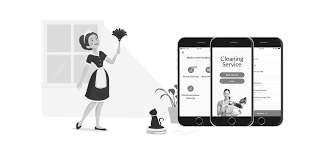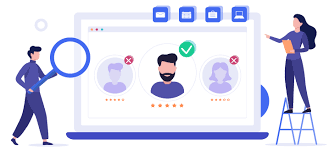In the dynamic tech ecosystem, Software as a Service (SaaS) has become the backbone of many U.S. businesses. With increasing competition and rapidly evolving technologies, understanding the SaaS product development lifecycle is essential for delivering scalable, reliable, and customer-centric solutions. This lifecycle offers a structured framework to guide the development process, ensuring the product remains competitive in a fast-paced market.
Table of Contents
Understanding the SaaS Development Lifecycle
The SaaS development life cycle encompasses several stages, from ideation to deployment and ongoing maintenance. Unlike traditional software development, SaaS products operate in a cloud-based environment, requiring continuous updates, user feedback integration, and scalability improvements. Here’s a breakdown of the key phases:
- Planning and Ideation
This stage involves identifying the target audience, defining the problem the SaaS product will solve, and conducting market research. Teams create a roadmap, outlining features and functionalities aligned with business goals. - Design and Prototyping
In this phase, developers and designers collaborate to create user-friendly interfaces and seamless user experiences. Prototypes are developed to test the product’s flow, helping stakeholders visualize the final product. - Development
The core development process involves writing code, integrating APIs, and building the product’s architecture. U.S. companies often adopt Agile methodologies to ensure flexibility and rapid iterations during this phase. - Testing and Quality Assurance
Rigorous testing ensures the product is free of bugs and performs well under various conditions. This stage includes functional, performance, and security testing, crucial for maintaining high standards. - Deployment and Release
After thorough testing, the SaaS product is deployed on cloud platforms. The release phase involves launching the product, often in stages like beta testing, to gather real-world feedback. - Maintenance and Updates
Continuous improvement is critical in the SaaS product lifecycle. Regular updates, based on user feedback and performance analytics, help maintain the product’s relevance and competitiveness.
Why the Lifecycle Matters
Understanding and implementing the SaaS development lifecycle provides several advantages for U.S. SaaS companies:
1. Enhanced Product Quality
Following a structured lifecycle ensures each stage is thoroughly completed, leading to a high-quality product. Testing phases catch errors early, reducing the risk of major issues post-launch.
2. Faster Time-to-Market
By using frameworks like Agile, companies can develop and release products faster. This is crucial in the U.S. market, where staying ahead of competitors can make or break a business.
3. Cost Efficiency
Identifying and resolving issues during early lifecycle stages prevents costly fixes later. Additionally, continuous updates help companies avoid large, disruptive overhauls.
4. Improved Customer Satisfaction
Customer feedback is integral to the SaaS product lifecycle. By continuously iterating based on user input, companies ensure their product remains user-centric, boosting retention rates.
5. Scalability and Flexibility
As U.S. businesses grow, their SaaS solutions must scale seamlessly. A well-executed lifecycle ensures the product is built on a flexible architecture, accommodating future growth and market demands.
Role of Kryoverse Innovations in SaaS Development
Kryoverse Innovations, a leading name in SaaS application development, specializes in guiding U.S. companies through the entire lifecycle. From ideation to post-launch support, Kryoverse leverages industry best practices to deliver robust and innovative SaaS solutions.
Their expertise lies in:
- Custom SaaS product development
- Agile project management
- Comprehensive testing and QA
- Scalable cloud solutions
With a proven track record, Kryoverse Innovations helps businesses navigate the complexities of SaaS development, ensuring their products meet market demands and drive growth.
Challenges in the SaaS Development Lifecycle
While the lifecycle offers a clear framework, it’s not without challenges:
- Data Security and Compliance
U.S. companies must adhere to regulations like GDPR and CCPA, ensuring user data is protected. Integrating robust security measures during development is crucial. - Integration Complexity
SaaS products often need to integrate with existing systems. Ensuring seamless compatibility requires careful planning and execution. - Resource Management
Balancing time, budget, and talent can be challenging. Companies need skilled developers and efficient project management to stay on track.
Best Practices for Success
To maximize the benefits of the SaaS product lifecycle, U.S. businesses should adopt these best practices:
- Embrace Agile Methodologies: Agile allows for flexibility and quick adaptations to market changes.
- Focus on User Feedback: Regularly collect and act on user feedback to improve the product.
- Invest in Scalability: Design the product to scale as the user base grows.
- Prioritize Security: Incorporate security measures from the development phase.
- Partner with Experts: Collaborating with companies like Kryoverse Innovations ensures access to industry-leading expertise.
Conclusion
The SaaS product development lifecycle is a vital framework for U.S. SaaS companies looking to build competitive, scalable, and user-centric products. By following this structured approach, businesses can achieve faster time-to-market, cost efficiency, and high customer satisfaction. With the support of experienced partners like Kryoverse Innovations, navigating the complexities of SaaS application development becomes more manageable, positioning companies for long-term success in the ever-evolving SaaS landscape.































